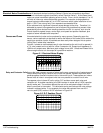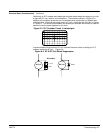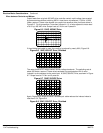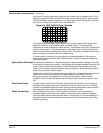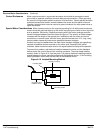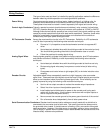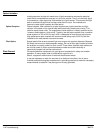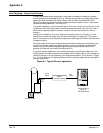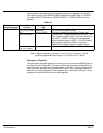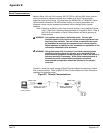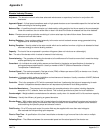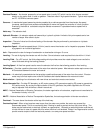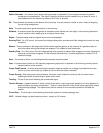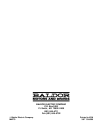
Section 1
General Information
C-2 Appendix C MN770
Gearless Elevator – An elevator powered by a low speed motor (usually DC) which has the drive sheave mounted
directly on the motor shaft. It uses no gearbox. These are used in high speed elevators. Typical motor speeds
are 70 -150 RPM at contract speed.
Governor – A mechanical speed measuring device propelled by a cable suspended from the elevator. As speed
increases, centrifugal force causes counterweights to move and signal the controller of a fault condition.
Eventually, the brake is activated to stop the elevator movement if a predetermined car speed limit is
exceeded.
Hoist way – The elevator shaft.
Hydraulic Elevator – An elevator raised and lowered by a hydraulic cylinder. Limited to fairly slow speeds and a low
number of stops. Also called a hydro.
Inspection – The act of visual and functional testing of the elevator. May be performed by contractors or city/state
inspectors.
Inspection Speed – A fixed low speed (about 10 ft/min) used to move the elevator car for inspection purposes. Similar to
a jog speed in an industrial application.
Jerk – Represents the rate of change of acceleration or deceleration during an S–curve.
Leveling – The act of aligning the elevator car with the floor. Current elevator code requires this to be within ±1/4 inch.
Leveling Field – On a DC control, the field voltage setting which provides more than rated voltage to over–excite the
motor field used during the leveling process.
Leveling Speed – A fixed low speed used to move the elevator the final two feet allowing precision floor leveling.
M-Contactor – Provides a positive disconnect of the motor from electrical power. Most elevator codes require one or two
M-Contactors between the motor and control.
Mechanic – An electrically operated device that provides a positive disconnect of the motor from the control. Elevator
codes vary but most require one or two M-Contactors be installed between the motor and control.
Modernization – Updating of an old elevator with new drives and controls to meet current codes.
Motor-Generator Set – On older DC elevators, an AC motor powers a DC generator supplying DC power to operate the
DC traction motor. By varying the field excitation of the DC generator, the power supplied to the DC motor
may be adjusted. Also known as a Ward–Leonard set.
NAEC – National Association of Elevator Contractors, the trade organization of contractors, suppliers and consultants for
the elevator industry in the US.
NAVTP – National Association of Vertical Transportation Specialists, the trade organization of elevator consultants.
Overhead – The area above the elevator at the top of the hoist way.
Overhauling Load – When a load requires more torque than the motor can provide, the motor may exceed the
commanded speed. This is an overhauling load. Braking is used to prevent the load (car) from falling. The
brake may be mechanical or electrical (dynamic or regenerative). Ultimately a mechanical brake must be set
to hold the load in case of a power failure or when the drive is not enabled. Baldor Line Regenerative controls
provide reverse torque to hold the load and prevent a run away over speed condition.



